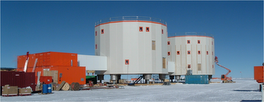CASE-IPY - Scientific Project
CASE-IPY : Concordia Antarctic Seismic Experiment for the International Polar Year
The CASE-IPY project is a part of a larger IPY initiative, the Polar Earth Observing Network (POLENET), which includes contributions from 24 countries, including France, Italy, Australia and the United States.
The aim of the POLENET consortium is to investigate polar geodynamics, the earth’s magnetic field, crust, mantle and core structure and dynamics, and systems-scale interactions of the solid earth, the cryosphere, the oceans and the atmosphere. Activities will be focused on deployment of autonomous observatories at remote sites on the continents and offshore, coordinated with measurements made at permanent station observatories.
We propose deploying 10 broad-band seismometers in East Antarctica, using Concordia / Dome C as our starting point. Our deployment will be coordinated with those of our Italian, American and Australian colleagues in order to achieve maximum coverage of the East Antarctica Plateau, and to share a maximum of logistical support.

Proposed IPY deployments in East Antarctica. Red: CASE-IPY. Dark blue: USA. Dark green: Australia. Light green: Italy (INGV). Light blue (small symbols): TAMSEIS (previously deployed by USA).
Our deployment will cover a part of East Antarctica that has as yet never been the subject of investigation, and will be a fully functional seismic antenna in its own right. It will also complete and connect the American, Australian and Italian deployments, thereby helping to create a single, large-footprint seismic array which will cover a substantial portion of the continent.
This combined POLENET East Antarctica network will number some 55 stations, and will have a combined length of over 4000 km, with a significant 2D component, providing unprecedented coverage of East Antarctica, and allowing us to reach the following objectives:
- improve our knowledge of the regional crustal structure;
- improve our knowledge of the regional lithospheric structure;
- improve our sampling for inner core studies.
You can read more about the project on the IPY Expression of Intent database, which you can reach from this post: Concordia Antarctic Seismic Experiment - International Polar Year.
-----
Keep up to date with the latest developments at http://sismordia.blogspot.com




No comments:
Post a Comment